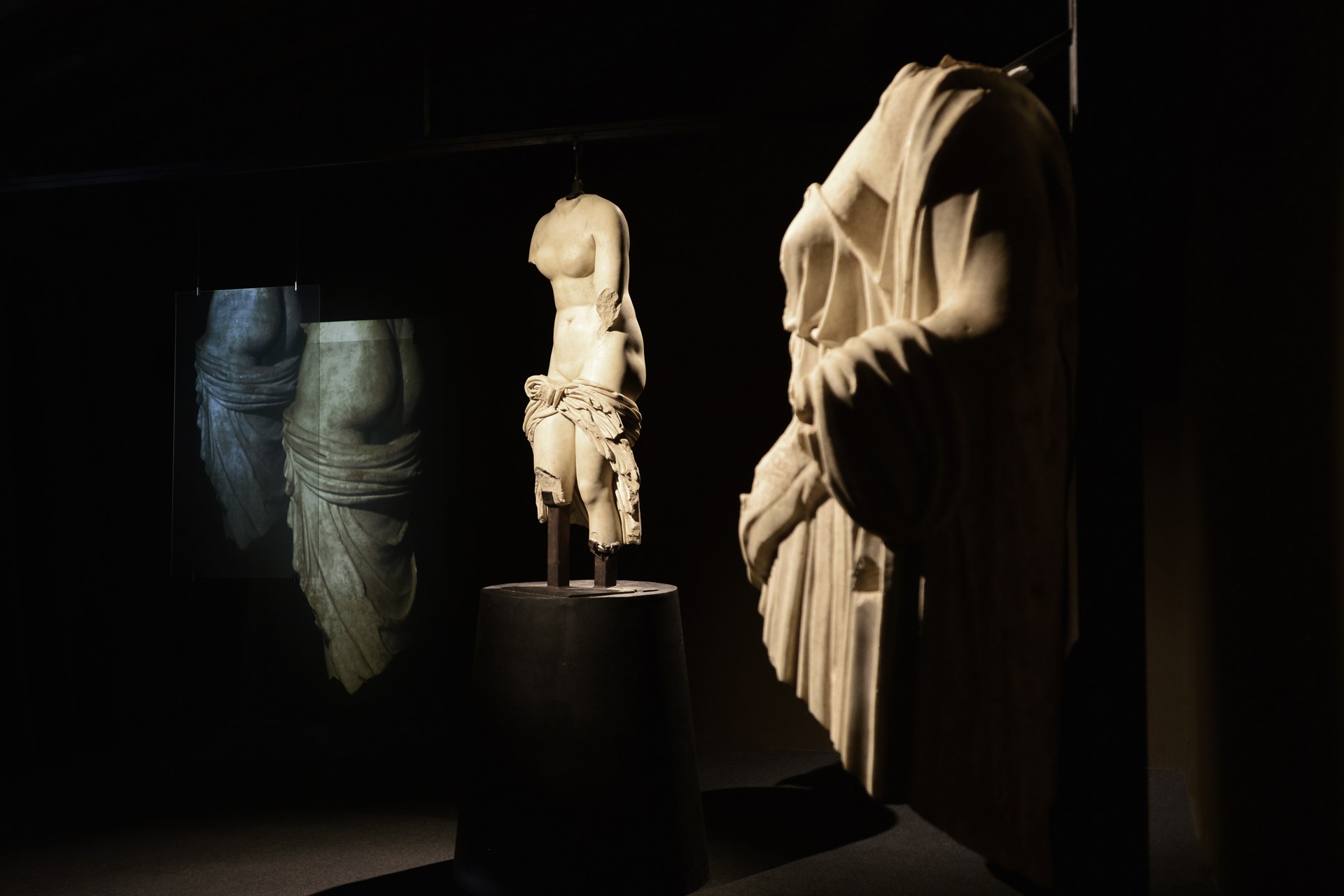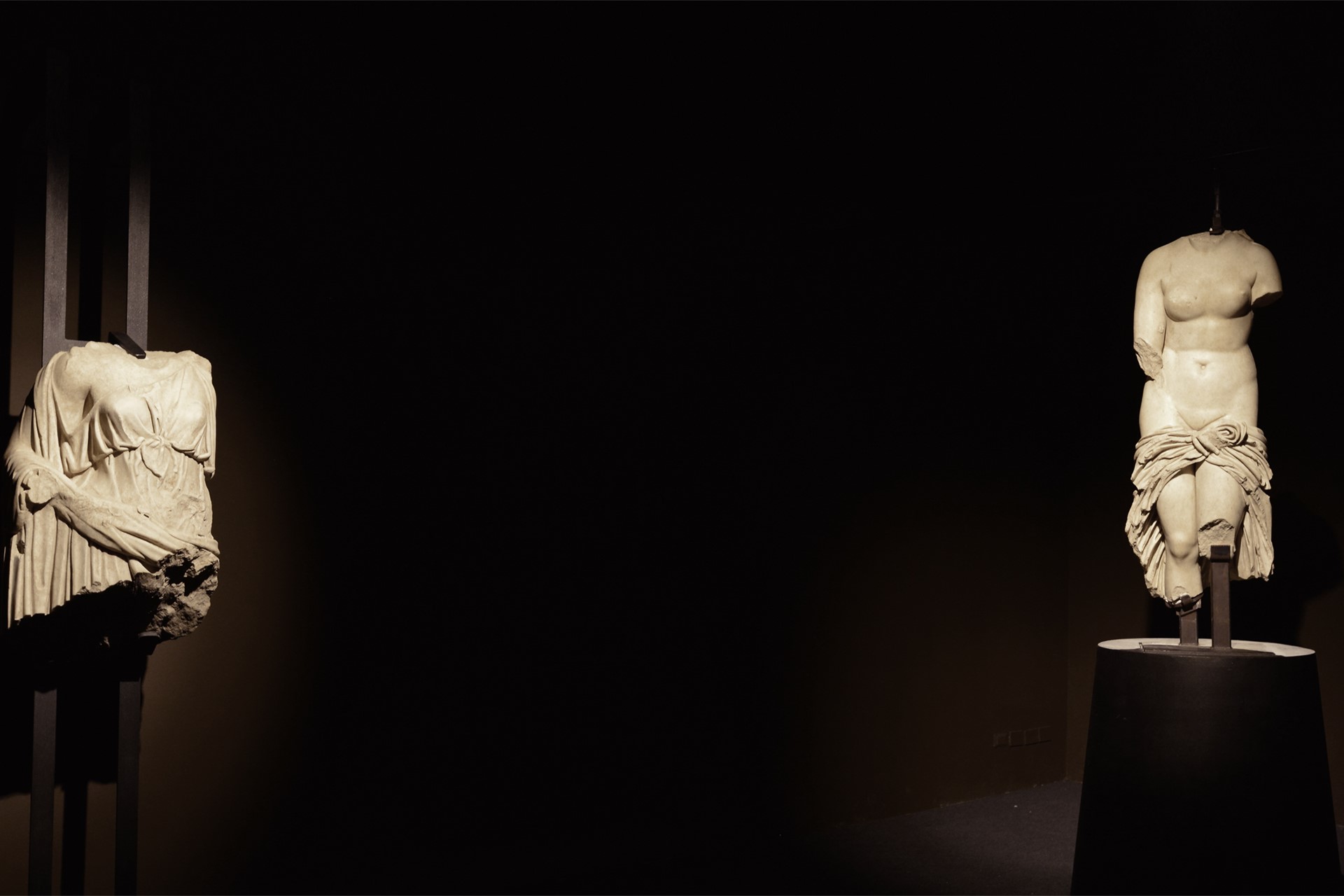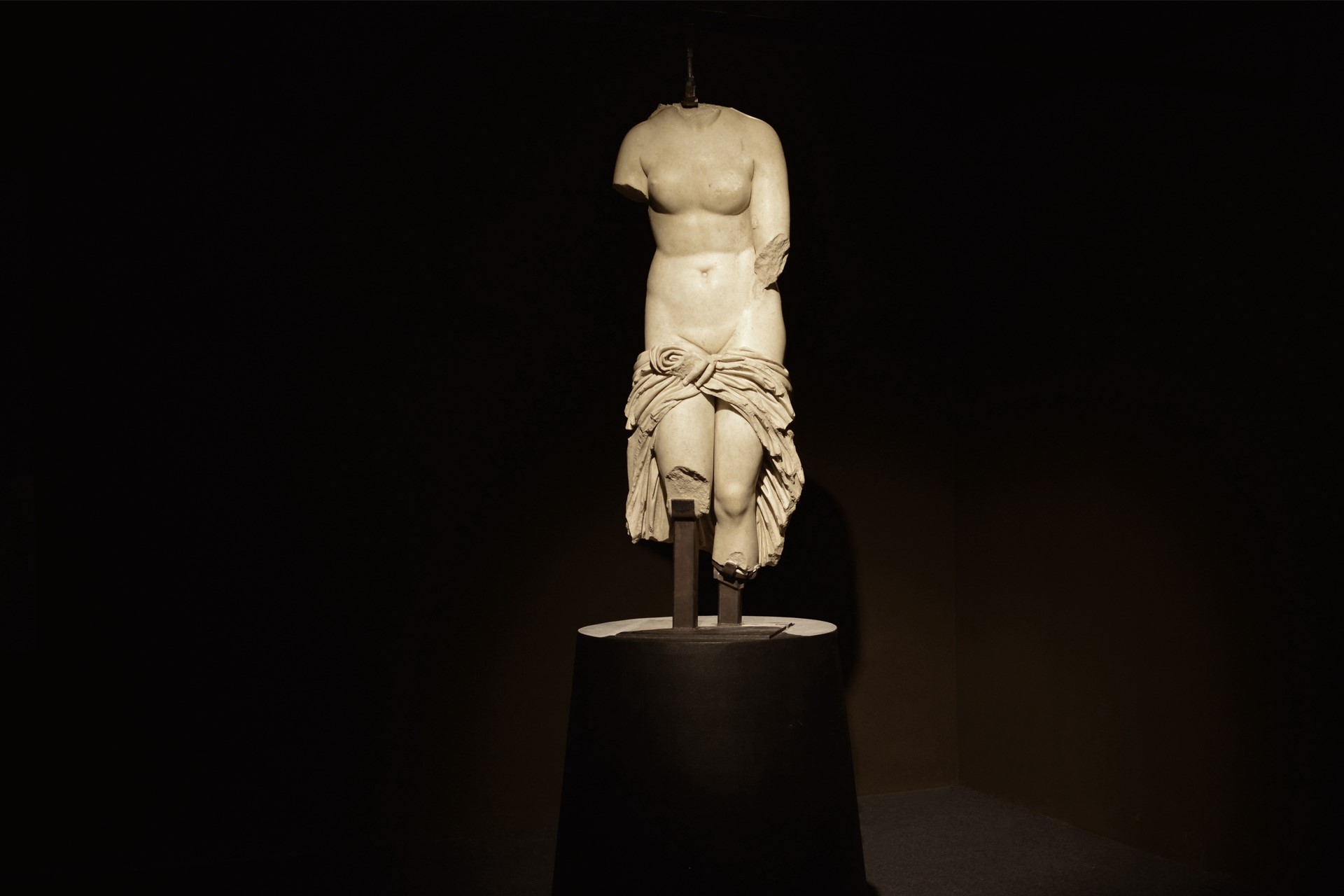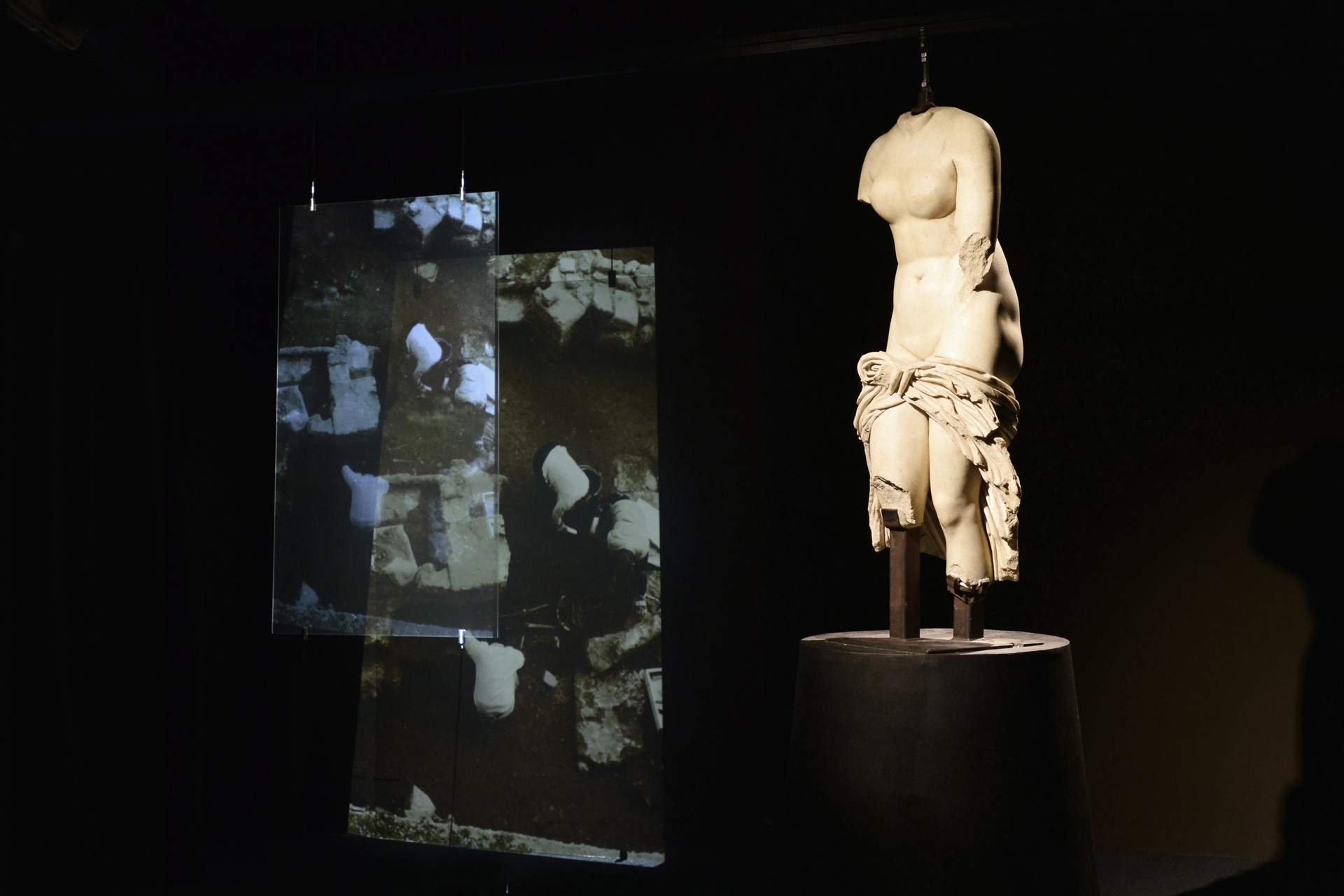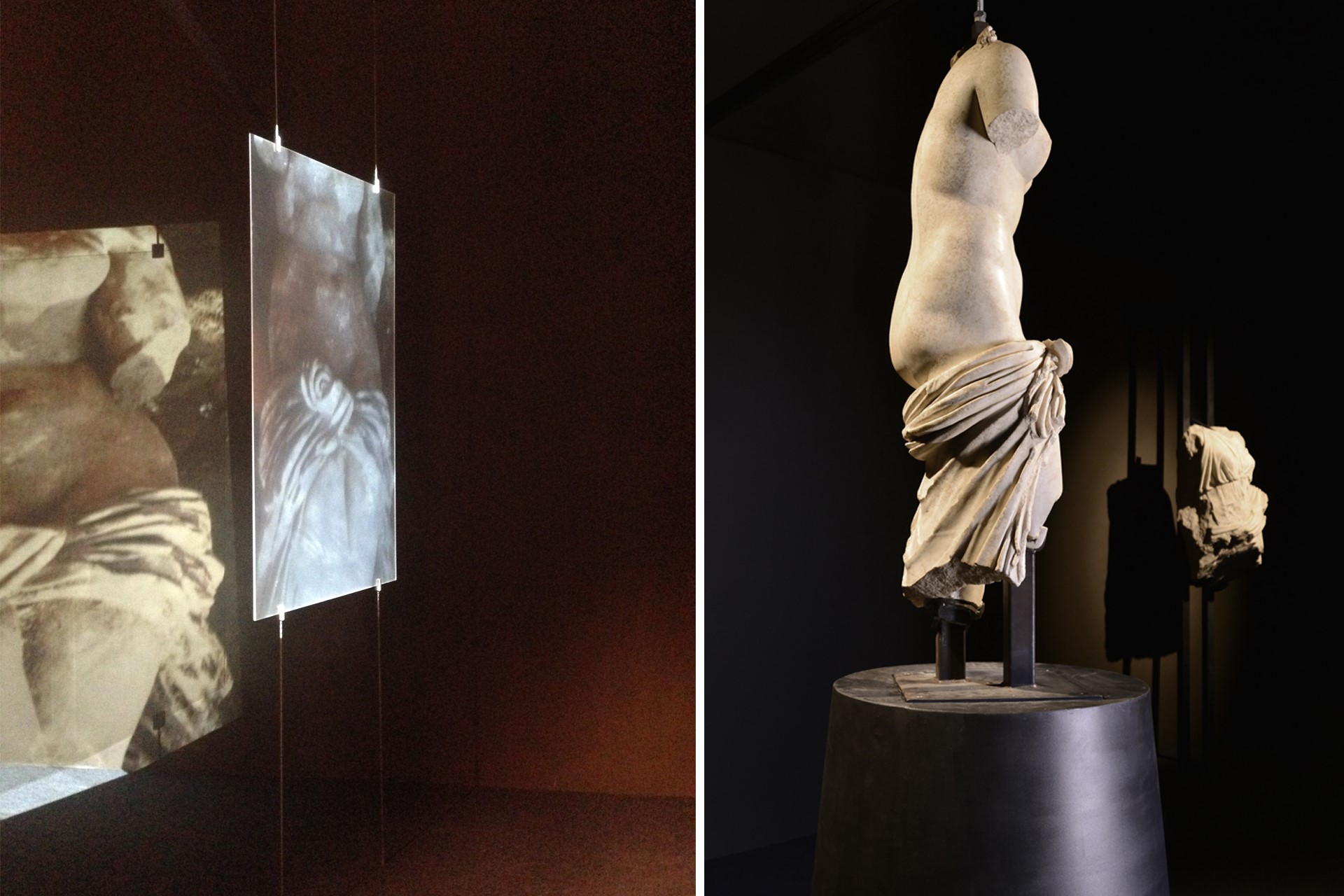Venere Callipigia Brolo
Agrigento
The sculptures presented on this route have been chosen among the most important archaeological evidence illustrating the spirituality of the ancient Mediterranean through two images of powerful and honored female gods, coming from the Sicilian museums, which correspond to the places of worship of fundamental importance in the world ancient.
In Marsala, in the area of Cape Boeo, the western end of Sicily, a city in connection with the ancient sanctuary of Erice and with the sea, major archaeological surveys have been conducted by the Superintendence BB in recent years. CC. AA. of Trapani, during which, in the area of the Decumanus maximus, the main street of the Roman urban system, the two exposed female statues were also found.
In 2005 the statue of Venus Callipige was discovered, a Roman copy of the 2nd century AD. of an original Greek, whose type of Venus Pudica is traced back to Prassitele and embodies the human ideal of the goddess of beauty and the regenerating force of love through the daily gestures of the bath. The statue, carved in white marble of probable Greek origin, is acephalous and flawed of the middle of the right arm, covering the breast more than half of the left arm, holding the himation, about half of the right leg and part of the left leg.
In 2008, again in Marsala, is the recapture of the grand-sized statue of Isis, an ancient god of Egyptian origin, adopted in the imperial age also by the Roman Pantheon, also acefala and white marble.
Isis’s identity, in addition to taking on the prerogative of the protector of the sailors of the sea, adapting to the pragmatic and individualistic needs of Roman popular religiosity, can enter more easily in the Mediterranean world, introduced to Rome through the Greek sovereigns of Egypt, the Ptolemies in the late Hellenistic age, knowing immediately a wide spread.
In Sicily, this sea-related and naval religion seems to be more concerned with the practices of Celtic cults and popular religiosity more sensitive to fertility cycles that in the Hellenic period determine the particular fortune of the Issaic cults that had particular diffusion both in the East (Siracusa area) which to the West (Cave Queen at Palermo, Lilibeo and Pantelleria). The particular fortune of the cult of Isis in Sicily, as well as being the cause of Carthaginian influence, is explained by its partial assimilation to the cult of Demetra.
In Marsala, in the area of Cape Boeo, the western end of Sicily, a city in connection with the ancient sanctuary of Erice and with the sea, major archaeological surveys have been conducted by the Superintendence BB in recent years. CC. AA. of Trapani, during which, in the area of the Decumanus maximus, the main street of the Roman urban system, the two exposed female statues were also found.
In 2005 the statue of Venus Callipige was discovered, a Roman copy of the 2nd century AD. of an original Greek, whose type of Venus Pudica is traced back to Prassitele and embodies the human ideal of the goddess of beauty and the regenerating force of love through the daily gestures of the bath. The statue, carved in white marble of probable Greek origin, is acephalous and flawed of the middle of the right arm, covering the breast more than half of the left arm, holding the himation, about half of the right leg and part of the left leg.
In 2008, again in Marsala, is the recapture of the grand-sized statue of Isis, an ancient god of Egyptian origin, adopted in the imperial age also by the Roman Pantheon, also acefala and white marble.
Isis’s identity, in addition to taking on the prerogative of the protector of the sailors of the sea, adapting to the pragmatic and individualistic needs of Roman popular religiosity, can enter more easily in the Mediterranean world, introduced to Rome through the Greek sovereigns of Egypt, the Ptolemies in the late Hellenistic age, knowing immediately a wide spread.
In Sicily, this sea-related and naval religion seems to be more concerned with the practices of Celtic cults and popular religiosity more sensitive to fertility cycles that in the Hellenic period determine the particular fortune of the Issaic cults that had particular diffusion both in the East (Siracusa area) which to the West (Cave Queen at Palermo, Lilibeo and Pantelleria). The particular fortune of the cult of Isis in Sicily, as well as being the cause of Carthaginian influence, is explained by its partial assimilation to the cult of Demetra.
Le sculture presentate in questo percorso sono state scelte fra le testimonianze archeologiche più importanti in grado di illustrare la spiritualità del Mediterraneo antico attraverso due immagini di potenti e venerate divinità femminili, provenienti dai musei siciliani, che corrispondono alle sedi di culto di fondamentale importanza nel mondo antico.
A Marsala, nell’area del Capo Boeo, estremità occidentale della Sicilia, città in collegamento con l’antico santuario di Erice e con il mare, sono state condotte negli ultimi anni indagini archeologiche rilevanti, da parte della Soprintendenza BB. CC. AA. di Trapani, nel corso delle quali sono stati rinvenute, nell’area del Decumanus maximus, la strada principale dell’impianto urbano di epoca romana, anche le due statue femminili esposte.
Nel 2005 fu scoperta la statua di Venere Callipige, copia romana del II secolo d.C. di un originale greco, la cui tipologia di Venere Pudica si fa risalire a Prassitele ed incarna l’ideale umano della dea della bellezza e della forza rigeneratrice dell’amore attraverso i gesti quotidiani del bagno. La statua, scolpita in marmo bianco di probabile provenienza greca, è acefala e manchevole della metà del braccio destro, che copriva pudicamente il seno, di più della metà del braccio sinistro, che reggeva l’himation, di metà circa della gamba destra e di parte della gamba sinistra.
Del 2008, sempre a Marsala, è il rinvenimento della statua a grandezza naturale di Iside, antichissima divinità di origine egizia, adottata in età imperiale anche dal Pantheon romano, anch’essa acefala e in marmo bianco.
L’identità di Iside, oltre ad assumere la prerogativa di protettrice dei naviganti del mare, nell’adattarsi alle esigenze pragmatiche ed individualistiche della religiosità popolare romana, può entrare più agevolmente nel mondo mediterraneo, introdotta a Roma attraverso i sovrani greci dell’Egitto, i Tolomei in epoca tardo ellenistica, conoscendo subito una ampia diffusione.
In Sicilia questa religiosità legata al mare e alle navigazioni appare più rivolta alle pratiche dei culti ctoni e a una religiosità popolare più sensibile ai cicli della fertilità che in epoca ellenistica determinano la particolare fortuna dei culti isiaci che ebbero particolare diffusione sia a Est (area siracusana) che a Ovest (Grotta Regina presso Palermo, Lilibeo e Pantelleria). La particolare fortuna del culto di Iside in Sicilia, oltre ad essere il portato dell’influenza cartaginese, si spiega con la sua parziale assimilazione al culto di Demetra.
A Marsala, nell’area del Capo Boeo, estremità occidentale della Sicilia, città in collegamento con l’antico santuario di Erice e con il mare, sono state condotte negli ultimi anni indagini archeologiche rilevanti, da parte della Soprintendenza BB. CC. AA. di Trapani, nel corso delle quali sono stati rinvenute, nell’area del Decumanus maximus, la strada principale dell’impianto urbano di epoca romana, anche le due statue femminili esposte.
Nel 2005 fu scoperta la statua di Venere Callipige, copia romana del II secolo d.C. di un originale greco, la cui tipologia di Venere Pudica si fa risalire a Prassitele ed incarna l’ideale umano della dea della bellezza e della forza rigeneratrice dell’amore attraverso i gesti quotidiani del bagno. La statua, scolpita in marmo bianco di probabile provenienza greca, è acefala e manchevole della metà del braccio destro, che copriva pudicamente il seno, di più della metà del braccio sinistro, che reggeva l’himation, di metà circa della gamba destra e di parte della gamba sinistra.
Del 2008, sempre a Marsala, è il rinvenimento della statua a grandezza naturale di Iside, antichissima divinità di origine egizia, adottata in età imperiale anche dal Pantheon romano, anch’essa acefala e in marmo bianco.
L’identità di Iside, oltre ad assumere la prerogativa di protettrice dei naviganti del mare, nell’adattarsi alle esigenze pragmatiche ed individualistiche della religiosità popolare romana, può entrare più agevolmente nel mondo mediterraneo, introdotta a Roma attraverso i sovrani greci dell’Egitto, i Tolomei in epoca tardo ellenistica, conoscendo subito una ampia diffusione.
In Sicilia questa religiosità legata al mare e alle navigazioni appare più rivolta alle pratiche dei culti ctoni e a una religiosità popolare più sensibile ai cicli della fertilità che in epoca ellenistica determinano la particolare fortuna dei culti isiaci che ebbero particolare diffusione sia a Est (area siracusana) che a Ovest (Grotta Regina presso Palermo, Lilibeo e Pantelleria). La particolare fortuna del culto di Iside in Sicilia, oltre ad essere il portato dell’influenza cartaginese, si spiega con la sua parziale assimilazione al culto di Demetra.
CLIENT
Soprintendenza archeologica di Agrigento
LOCATION
Agrigento
PROJECT TEAM
ITINERA LAB
SCHEDULE
Progetto Definitivo
Progetto Esecutivo
Direzione Lavori
PHASE
Completed
BUDGET
50.000,00 €
SIZE
100 smq

